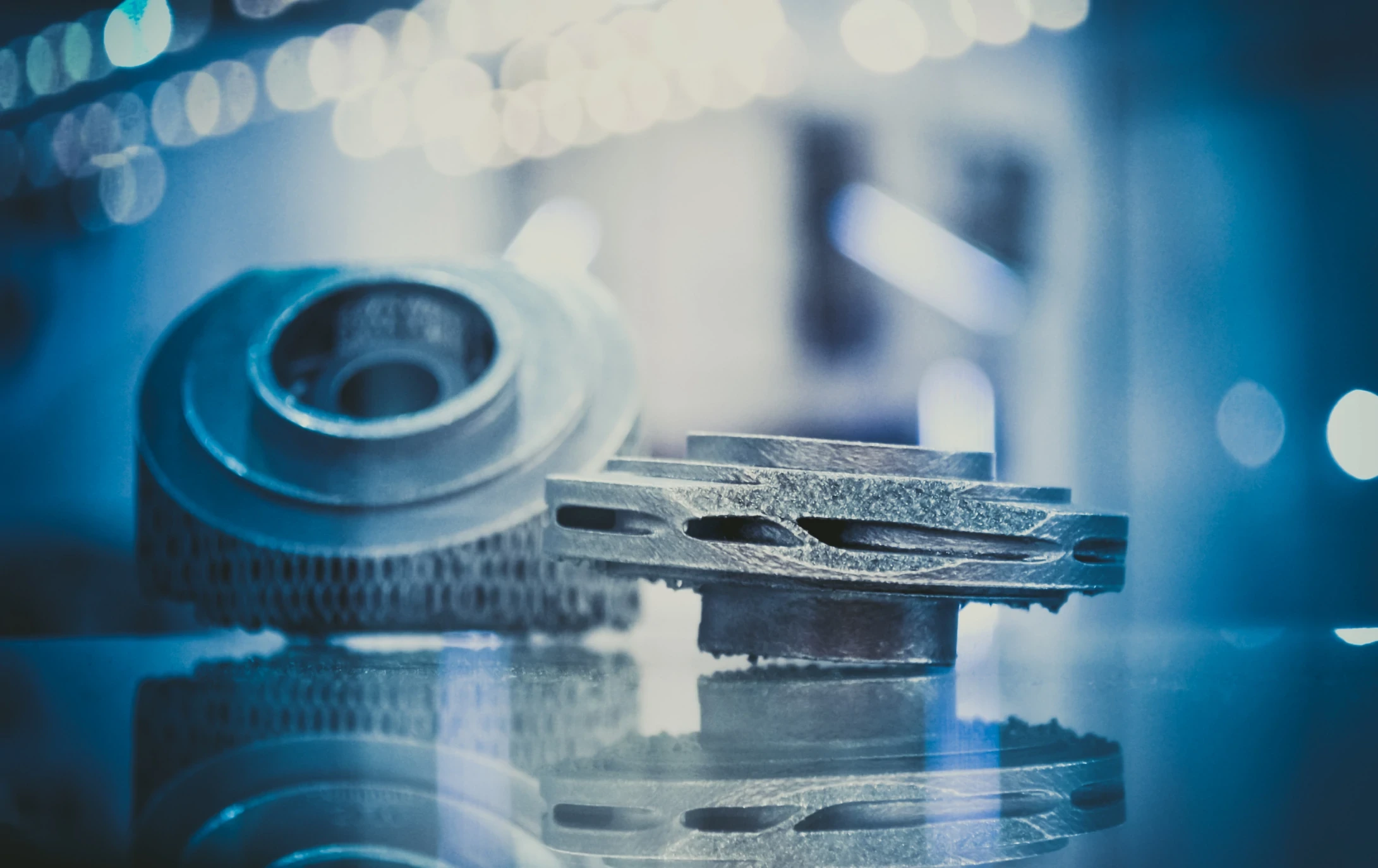
Why Use 3D Metal Printing Prototyping in Additive Manufacturing?
Prototyping allows you to test the feel, function, look, and durability of a designed component before sending it for manufacturing. This test run removes risk from your investment and increases end-customer satisfaction.
Today, there are more ways than ever to prototype a metal component. Since they all have their positives, let’s look at each prototyping method and discuss how prototyping is an effective additive manufacturing (also known as 3D printing) method.
Options for Additive Manufacturing Metal Part Prototyping
There are many ways of developing a metal prototype. We’ll dive into these five popular methods below.
-
-
3D printing
-
CNC machining
-
Sheet metal fabrication
-
Extrusion
-
Casting
-
Need more information on metal additive manufacturing? Our MAM checklist is a great place to start. Read and download the guide here.
1. 3D Metal Printing
During the 3D metal printing process, a machine adds layers of material based on a specific design until the part is formed into the desired shape. There are a number of different forms of 3D printing. One popular MAM method is binder jetting, where a part is formed through layering a binder agent to a power bed repeatedly to form a finished product.
How it compares to other methods: 3d metal printing is an effective way to create complex shapes out of intricate designs that aren’t possible with traditional machining processes. However, for certain projects, time and cost can be a perceived drawback.
2. CNC Machining
CNC machining uses computerized controls to operate a set of multipoint rotary cutting tools. As the tools rotate and move across the surface of the metal, they remove excess material to achieve the desired shape and size of your prototype. This process can work with a variety of metals, including:
-
- Aluminum
- Steel
- Titanium
- Zinc
- Magnesium
How it compares to other methods: While a small part can be made in a matter of hours, larger, more complex parts may take weeks using CNC machining. Additionally, unlike 3D metal printing prototyping, there is massive material waste during the process (up to 50% of the raw material), increasing overall costs.
3. Sheet Metal Fabrication
Sheet metal fabrication involves forming a piece of metal into the desired shape through bending, stretching, and removal of material. The process can be done by a laser-guided machine cutter or manual processes to create flexible, weldable prototypes.
How it compares to other methods: Although pieces are flexible, the viscosity of some metals does not allow for complex shapes or designs. The process is also typically more labor-intensive than other manufacturing techniques, which can raise your overall costs.
4. Metal Extrusion
During the extrusion process, a block of metal, also known as a billet, is forced through a die with a specific cross-sectional profile. It’s a bit like squeezing toothpaste out of a tube.
How it compares to other methods: Through extrusion, you create complex, strong cross-sections with an excellent surface finish. Disadvantages of extrusion include a high initial cost setup, production limitations (only one type of cross-section can be made at a time), and part-by-part variation in size.
5. Metal Casting
During the metal casting process, molten metal is poured into a mold cavity, where it’s cooled and later extracted.
Metal casting can produce complex shapes with features such as internal cavities and hollow sections. Parts are typically near-net shape, with minor post-processing necessary, if any.
How it compares to other methods: Casting is more expensive in medium-to-small quantities due to high die cost. Another disadvantage to metal casting is that the surface finish is relatively coarse and not suitable for mating interfaces.
Advantages of 3D Metal Printing Prototyping in Additive Manufacturing
3D metal printing prototyping is evolving, but its advantages over other types of manufacturing remain consistent. Here are its main benefits:
-
- Faster production times: Parts created by traditional manufacturing processes like casting and forging can take weeks or months. With additive manufacturing prototyping, parts can be made in a matter of days -- allowing for efficient design modification and quicker time to market.
- Cost-effectiveness: Metal 3D printing is cost-effective for prototyping, allowing quick design iterations without the need for molds or tooling. The layer-by-layer process minimizes material waste compared to traditional subtractive methods. Additive machines don’t require constant supervision, freeing up resources and saving money, though skilled technicians are still needed for setup and post-processing, if needed. Outsourcing to an experienced additive manufacturer lets you take advantage of 3D printing without the burden of equipment and training costs.
- Consistent, quality parts: Additive manufacturing rapid prototyping produces reliable, high-quality parts.
-
-
Complex designs: 3D metal printing allows for intricate designs, such as complex curves, shapes, or cavities, that traditional manufacturing processes can’t handle.
- Tooling convenience: Tooling (jigs, fixtures, mold inserts, etc.) often has complex geometry. Tooling produced through CNC machining can lead to manufacturing congestion, due to a limited number of machines and operators. Producing tooling via 3D metal printing prototyping can eliminate these pain points by freeing up operators and reducing downtime.
-
Want to learn more about prototyping and its applications? Click here to read this article about how rapid prototyping is used in the automotive industry.
Which Metal Part Prototyping Method Should You Choose?
Your idea may look good on paper, but how does it hold up to real-life challenges?
Rapid prototyping and additive manufacturing allow you to test the component before sending it off to your customer, saving time and money. The prototype method you choose will depend a lot on the type of part being produced, its application(s), and the volume of parts needed.
In comparison to other prototyping methods, additive manufacturing prototyping is a cost-effective solution that provides high-quality prototypes that hold up to real-world challenges.
To learn how additive manufacturing can support your product development, contact us.
